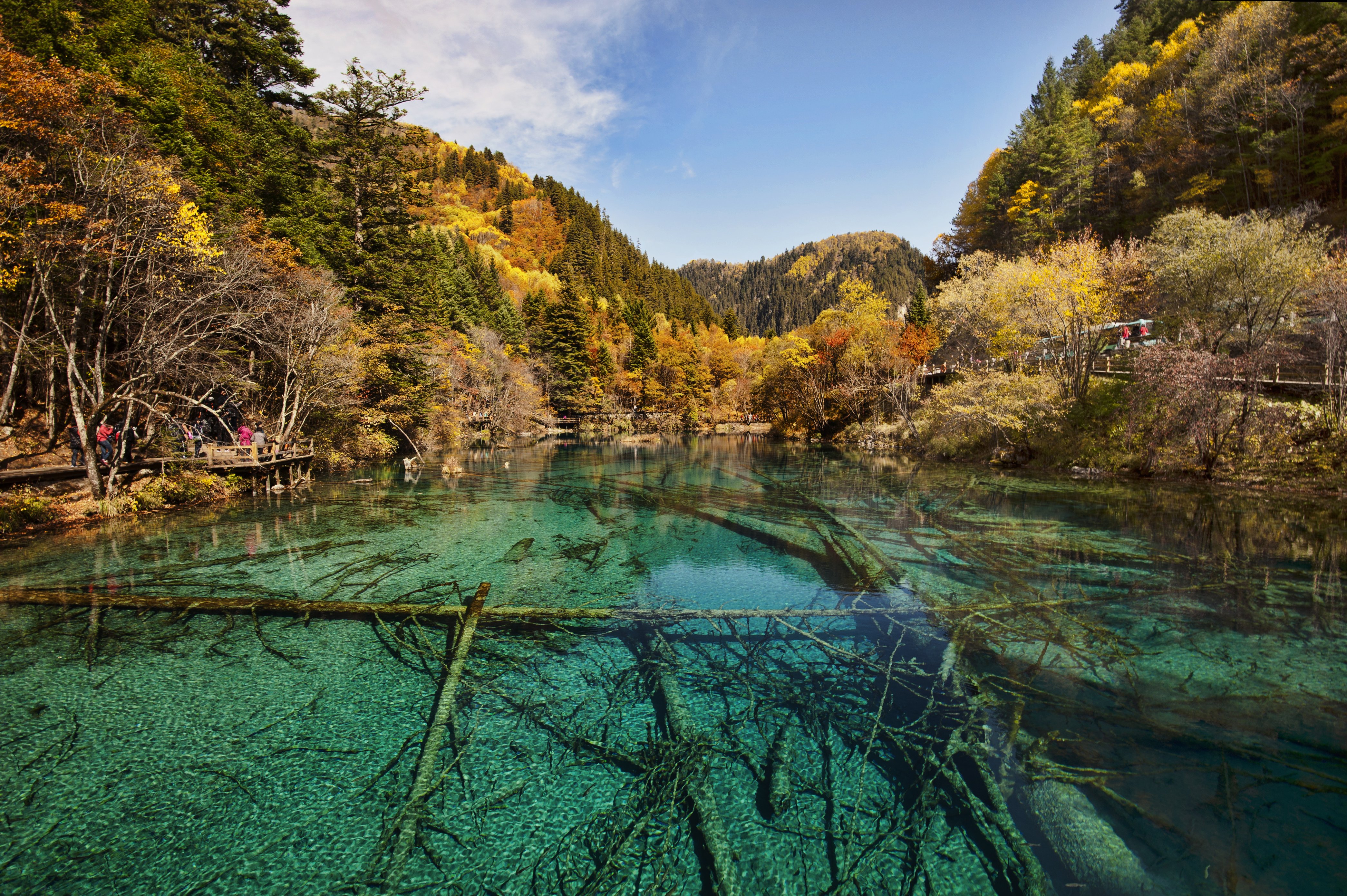
Why is Jiuzhaigou Famous?
Jiuzhaigou Valley, located in the northern part of Sichuan Province, China, is a renowned nature reserve and a UNESCO World Heritage Site. It's a place of breathtaking beauty, famed for its vibrant blue, green, and turquoise-colored lakes, stunning waterfalls, snow-capped peaks, and diverse forests. But what specifically contributes to its fame? Let's delve into the details.
1. Unique and Colorful Lakes
Jiuzhaigou is best known for its dazzling, multi-hued lakes, locally called haizi. These lakes, formed by glacial, hydrological, and tectonic activity, get their striking colors from the interplay of sunlight and the mineral-rich water. Calcium carbonate, along with other dissolved minerals and suspended organic matter, reflect blue, green, and turquoise wavelengths of light, creating a mesmerizing visual spectacle.
Some of the most famous lakes include:
| Lake Name | Distinctive Features | |----------------------|--------------------------------------------------------------------------| | Five Flower Lake | Known for its vibrant and diverse colors, reflecting the surrounding flora. | | Panda Lake | Named for its resemblance to a giant panda, with distinct white and black areas. | | Long Lake | The longest and deepest lake in Jiuzhaigou, renowned for its serene beauty. |
2. Spectacular Waterfalls
Adding to the allure of Jiuzhaigou are its numerous waterfalls, cascading down the valleys and cliffs, each with its own unique charm. The waterfalls are formed by the geological structure of the area, with water flowing over travertine terraces and plunging into crystal-clear pools.
Notable waterfalls include:
| Waterfall Name | Features | |----------------------|-----------------------------------------------------------------------| | Nuorilang Waterfall | One of the widest waterfalls in China, spanning over 300 meters. | | Pearl Shoal Waterfall | Its cascading water resembles pearls scattering on a jade plate, hence the name. |
3. Rich Biodiversity
Beyond its geological wonders, Jiuzhaigou boasts rich biodiversity. The valley provides sanctuary to a vast array of flora and fauna, some of which are endangered.
-
Flora: Jiuzhaigou is home to over 2,000 plant species, including various types of rhododendrons, bamboo, and conifers, contributing to the vibrant tapestry of colors across the landscape.
-
Fauna: This haven supports a diverse fauna, including around 140 bird species. Furthermore, it provides refuge to several endangered species:
- Giant Panda: The iconic and vulnerable giant panda finds its home in the bamboo forests of Jiuzhaigou.
- Sichuan Takin: This large goat-antelope species, with its distinctive golden coat, roams the higher elevations of the valley.
- Golden Snub-nosed Monkey: Another endangered species, these monkeys with their upturned noses are a delight to spot in the lush forests.
4. Cultural Significance
Jiuzhaigou holds cultural significance for the local Tibetan and Qiang people. The valley's name, "Valley of Nine Villages," derives from the nine Tibetan villages that historically existed within the area. The local communities have long coexisted with nature, their traditions and beliefs intertwined with the surrounding landscapes. Visitors can experience this cultural richness through traditional houses, temples, and local festivals.
5. Preservation Efforts
Recognizing the importance of preserving this natural wonder, the Chinese government designated Jiuzhaigou a national park in 1978 and a UNESCO World Heritage Site in 1992. These designations highlight the global significance of its natural beauty and biodiversity. The park authorities have implemented measures to manage tourism sustainably, protect the ecosystem, and promote environmental awareness among visitors.
FAQs about Jiuzhaigou
1. When is the best time to visit Jiuzhaigou?
Autumn (September to November) is arguably the best time to visit, as the foliage transforms into a breathtaking palette of red, orange, and yellow. However, each season offers unique beauty: spring for blooming flowers, summer for lush greenery, and winter for a snowy wonderland.
2. How do I get to Jiuzhaigou?
The most convenient way to reach Jiuzhaigou is by flying to Jiuzhai Huanglong Airport (JZH) and then taking a bus or taxi to the park entrance.
3. Are there accommodations available inside Jiuzhaigou Valley?
While there are no hotels inside the park, several hotels and guesthouses are available in the nearby town of Zhangzha, offering a range of options to suit different budgets.